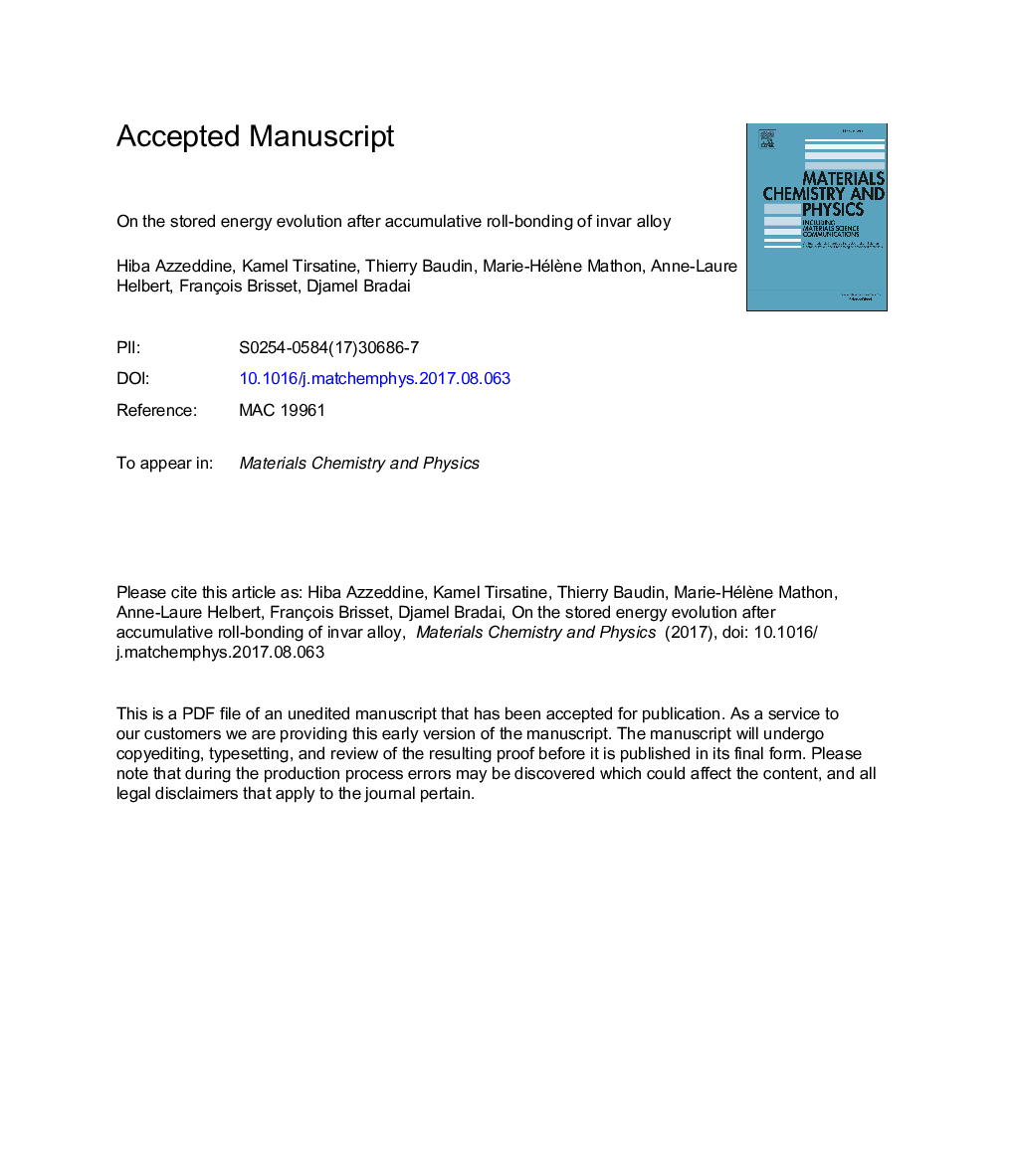| Article ID | Journal | Published Year | Pages | File Type |
|---|---|---|---|---|
| 5447793 | Materials Chemistry and Physics | 2017 | 21 Pages |
Abstract
The evolution of stored energy associated with Brass {110}<112>, Copper {112}<111>, S {231}<346> and Cube {001}<100> texture components of Fe-36Ni (wt.%) Invar alloy after accumulative roll-bonding (ARB) processing up to 6 cycles was investigated using two methods: Neutron Diffraction peak broadening analysis and Kernel Average Misorientation (KAM) in an electron backscatter diffraction (EBSD). Both methods evidence the stored energy evolution variation as ECopper > ES > EBrass > ECube. The stored energy increases first with strain up to 3 cycles and then decreases and then slightly rises up again between 4 and 6 cycles but with a trend towards stabilization. The overall evolution of the stored energy versus strain was related to the dislocation density and substructure evolution as well as recovery process. The small increase of the stored energy at high deformation levels is due to the production of new dislocations. Comparisons between results obtained with the two methods and with Dillamore approach show that Geometrically Necessary Dislocations (GND) dislocations in the cells/sub-grains walls are the principal contributor to the stored energy of the alloy.
Related Topics
Physical Sciences and Engineering
Materials Science
Electronic, Optical and Magnetic Materials
Authors
Hiba Azzeddine, Kamel Tirsatine, Thierry Baudin, Marie-Hélène Mathon, Anne-Laure Helbert, François Brisset, Djamel Bradai,
